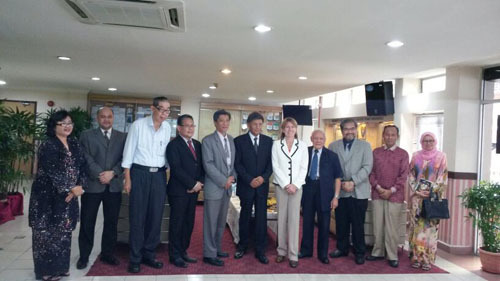
Why is transformation needed in the Malaysian education system and how will it best be secured and sustained? In the latest PISA tests, Malaysia scored 52nd out of 65 ممالک. The government’s Malaysia Education Blueprint (MEP) 2013 – 2025 sets out goals and strategies for comprehensive system transformation to prepare students for the challenges of a 21st century world. The MEP was recently supplemented by the National Higher Education Strategic Plan (PSPTN), which intends to ensure that system transformation takes place from pre-school through to the University level. میں تعلیم کے لئے گلوبل تلاش series we have learned that successful education systems around the world invest in high quality teachers and principals. Joining us from Malaysia today for Part 2 وسطی کے بمقابلہ. West is Dr. Alma Harris to share her perspectives on how educational outcomes can be improved within the Malaysian system. Alma Harris is a Professor and Director of the Institute of Educational Leadership at the University of Malaya and Professor of Educational Leadership at the Institute of Education (IOE) لندن. اس کی تازہ ترین کتاب, ہلکے پھلکے قیادت, with Andy Hargreaves and Alan Boyle, is published by Wiley Business Press.

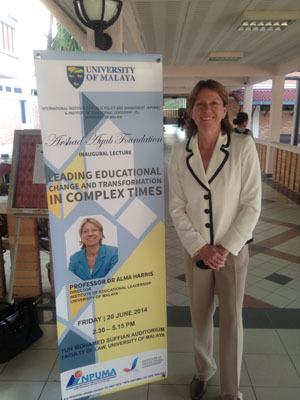
What are the primary challenges faced by the Malaysian education system?
In a complex, diverse and economically burgeoning society, the current challenges facing the Malaysian education system are considerable. Its economic potential is fast outpacing its human capital. Malaysia is rich in natural resources, plus its position within Southeast Asia makes it a central hub in the region. It is a country on the move economically but its future growth is heavily dependent on the existence of a highly educated and qualified workforce. کوئی شک کے بغیر, the primary challenge currently facing the education system in Malaysia is to ensure that there is a steady supply of young people with the skills required for the 21st century workplace. To meet this challenge, the education system has to raise its game. The latest PISA results have not brought good news. Malaysian students recorded an average score of 421 for mathematics, which is below the 494 mean for countries within OECD. Of most concern is the fact that Malaysian students’ reading scores plunged to 398 from the previous PISA score of 414. Science scores also showed a minor decline. These combined results mean that Malaysia currently stands at 52nd out of a total of 65 ممالک. It seems to be firmly entrenched in the bottom third while its nearest neighbor, سنگاپور, continues to enjoy a top position. ریاضی میں, the latest TIMM’s (انٹرنیشنل ریاضی اور سائنس کے مطالعہ کے رجحانات) results show that the system’s performance had slipped below the international average in both science and mathematics. Over a third of students failed to meet the minimum proficiency levels in mathematics and science. While the Malaysian education system has made tremendous progress since its independence in 1957, these remarkable gains are now at risk both in relative and absolute terms. In summary, other systems are improving student performance more rapidly and have found ways to sustain that momentum. اس کے علاوہ, international assessments suggest that Malaysian student performance is declining in absolute terms (Malaysian Education Blueprint 2013-2025).
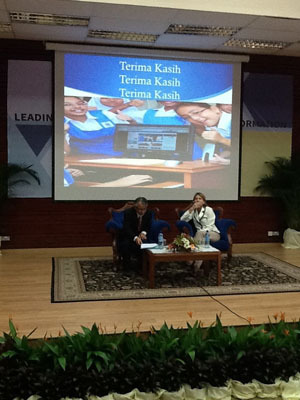
What changes do you believe are needed to the educational system to enable Malaysia to have the human skills needed to compete globally in the 21st Century?
The Malaysian Education Blueprint 2013-25 lays out an ambitious programme for change and improvement. It has all the right ingredients, some would argue too many, but the top priority has to be changing classroom practice. Learner outcomes are unlikely to improve unless there is serious and long-term investment in improving teacher quality. This is not to imply a deficit model but simply to acknowledge that in the best performing systems, teacher quality is high and there is a deep commitment to ongoing professional learning and development. All teachers, even the best teachers, can improve with the right professional training and development. The challenge is to provide this and to not opt for a one size fits all model of professional learning, which will not work.
How has technology impacted the Malaysian education system? What do educators in Malaysia see as the pros and cons from a learning standpoint?
میں 2012, a new virtual learning environment was launched for more than a thousand schools across Malaysia. With 1BestariNet, every school will be equipped with high speed 4G Internet connectivity and a classroom management tool known as the مینڈک چاہتے. This platform replicates the classroom by integrating advanced teaching and learning materials that assist in the VLE implementation in schools, taking teaching and learning beyond the classroom. The مینڈک چاہتے is a cloud-based application which functions through an eLearning platform and may be accessed from anywhere and anytime with an Internet connection. In terms of the pros, the مینڈک چاہتے allows teachers to manage their lessons beyond the classroom setting via online courses and interaction. It also allows greater parental engagement in the learning process as parents can gain access to the platform. The cons are largely linked to pedagogy. مختصر میں, the hardware is in place but many teachers are not integrating it into their teaching. A recent study concluded that Teachers’ use of ICT in schools remains “slow and dismal”, even in those subjects such as science where there is an obvious relationship. This is disappointing but not surprising, as many countries have assumed that new technology is an automatic way to raise performance. Not so, unless there is a concurrent investment in training teachers to integrate technology into their pedagogy. To be most effective, technology has to be part of a new pedagogy, a paradigm shift in classroom practice.

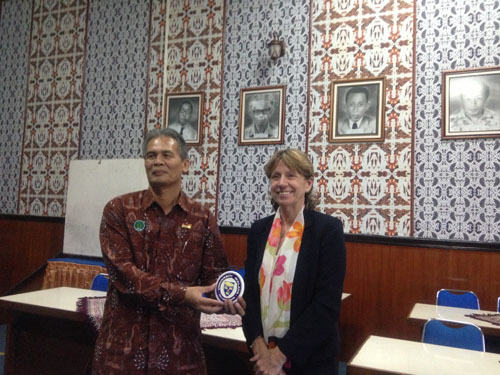
What is your current view of standardized testing in Malaysia?
In Malaysia, students are tested frequently at all levels and in all subjects throughout their school life. As in many other countries, testing has become the habitual way of checking content knowledge and understanding. While the use of standardized tests may be less infrequent than in other parts of Asia, it remains the case that drill, skill and test is a common feature of everyday classroom practice. Regurgitating facts is at best surface learning and will do little to help students faced with international tests that require thinking skills and problem solving. نتیجتا, a move away from assessment of learning, in its narrowest sense, to assessment for learning is without question one positive step that many teachers in Malaysian classrooms could make.
سامانییکرن ممکن ہے, what elements do you believe are missing from the existing system?
While the Malaysian Education Blueprint and the National Higher Education Strategic Plan are both good documents focusing on all the right things, their implementation is now the real challenge. A fractionalized and compartmentalized approach to delivering various policy imperatives, no matter how good they might be, is unlikely to work. In other parts of the world, the lack of policy alignment has proven to be a significant problem and barrier to change. Multiple demands from various parts of the reform agenda will only lead to demoralization, confusion and burn out. They will compete for valuable time, energy and resource. بالآخر, these policies will make little or no difference if there is not some overarching and coherent mechanism for putting them into practice. Around the world we have seen so much reform and so little change. Here is an opportunity for Malaysia to not step into this reform trap. The real challenge for the Malaysian education system is twofold. اول, it is to embrace and engage in real and sustainable change, اور دوم, to strive for the equity and excellence that the high performing systems around the word embody. Only then will its aspirations to be a global player, educationally and economically, be realized. (The views expressed are those of Dr. Alma Harris and not necessarily the views of the University of Malaya)


All photos are courtesy of Alma Harris
تعلیم کے لئے عالمی تلاش میں, سر مائیکل باربر سمیت میرے ساتھ اور عالمی سطح پر معروف فکری رہنماؤں (برطانیہ), ڈاکٹر. مائیکل بلاک (امریکہ), ڈاکٹر. لیون Botstein (امریکہ), پروفیسر مٹی Christensen کے (امریکہ), ڈاکٹر. لنڈا ڈارلنگ-ہیمنڈ (امریکہ), ڈاکٹر. مادھو چوہان (بھارت), پروفیسر مائیکل Fullan (کینیڈا), پروفیسر ہاورڈ گارڈنر (امریکہ), پروفیسر اینڈی Hargreaves نے (امریکہ), پروفیسر کریں Yvonne ہلمین (نیدرلینڈ), پروفیسر کرسٹن Helstad (ناروے), جین Hendrickson نے (امریکہ), پروفیسر گلاب Hipkins (نیوزی لینڈ), پروفیسر Cornelia Hoogland (کینیڈا), فاضل جیف جانسن (کینیڈا), مسز. چینٹل کوفمین (بیلجیم), ڈاکٹر. Eija Kauppinen (فن لینڈ), سٹیٹ سیکرٹری Tapio Kosunen (فن لینڈ), پروفیسر ڈومینک Lafontaine (بیلجیم), پروفیسر ہیو Lauder (برطانیہ), پروفیسر بین لیون (کینیڈا), رب کین میکڈونلڈ (برطانیہ), پروفیسر بیری McGaw (آسٹریلیا), شیو ندار (بھارت), پروفیسر R. نٹراجن (بھارت), ڈاکٹر. PAK NG (سنگاپور), ڈاکٹر. ڈینس پوپ (امریکہ), شریدر رازگوپالن (بھارت), ڈاکٹر. ڈیانے Ravitch (امریکہ), رچرڈ ولسن ریلی (امریکہ), سر کین رابنسن (برطانیہ), پروفیسر Pasi Sahlberg (فن لینڈ), پروفیسر Manabu ساتو (جاپان), Andreas کی Schleicher (پیسا, او ای سی ڈی), ڈاکٹر. انتھونی Seldon نے (برطانیہ), ڈاکٹر. ڈیوڈ Shaffer کے (امریکہ), ڈاکٹر. کرسٹن عمیق کر رہے ہیں (ناروے), چانسلر اسٹیفن Spahn (امریکہ), ایوز Theze (اسکول Français کی امریکہ), پروفیسر چارلس Ungerleider (کینیڈا), پروفیسر ٹونی ویگنر (امریکہ), سر ڈیوڈ واٹسن (برطانیہ), پروفیسر Dylan کے Wiliam (برطانیہ), ڈاکٹر. مارک Wormald (برطانیہ), پروفیسر تیو Wubbels (نیدرلینڈ), پروفیسر مائیکل نوجوان (برطانیہ), اور پروفیسر Minxuan جانگ (چین) وہ تمام اقوام کو آج سامنا ہے کہ بڑی تصویر تعلیم سوالات دریافت کے طور پر. تعلیم کمیونٹی پیج کے لئے گلوبل تلاش
C. M. روبن وہ ایک موصول ہوئی ہے جس کے لئے دو بڑے پیمانے پر پڑھا سیریز کے مصنف ہے 2011 میں Upton سنکلیئر ایوارڈ, “تعلیم کے لئے گلوبل تلاش” اور “کس طرح پڑھیں گے?” انہوں نے تین bestselling کتابوں کے مصنف ہیں, سمیت Wonderland میں یلس اصلی, کے ناشر ہے CMRubinWorld, اور ایک Disruptor فاؤنڈیشن فیلو.
C پر عمل کریں. M. ٹویٹر پر روبن: www.twitter.com/@cmrubinworld

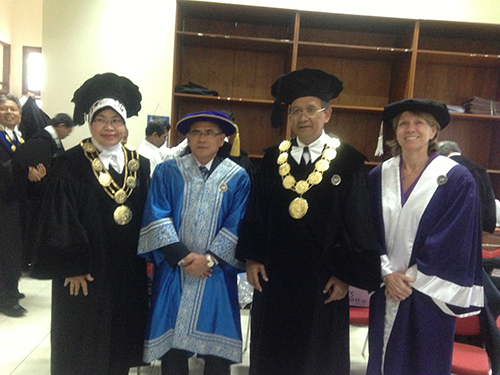

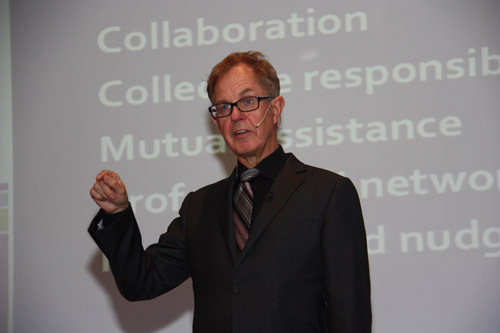

حالیہ تبصرے